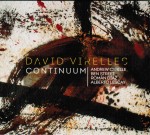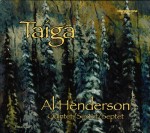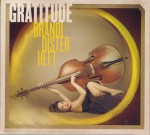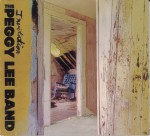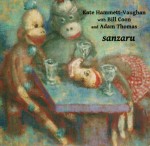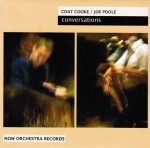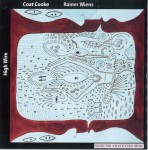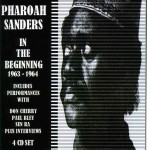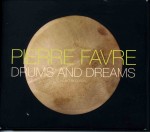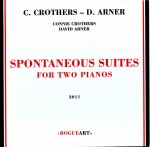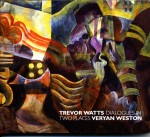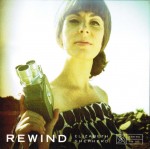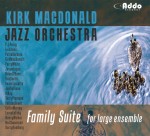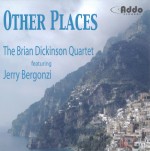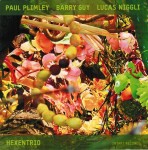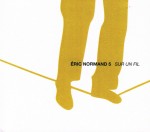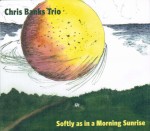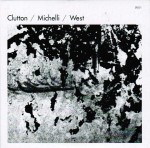At the height of jazz’s popularity, during the Big Band era of the 1930s and 1940s, one of the most common images was of a resplendent clarinettist, instrument shining in the spotlight, taking a hot solo. Subsequent styles found the so-called licorice stick relegated to a poor cousin of the saxophone, with few reed players brave enough to keep the clarinet as a double, let alone concentrate on its unique timbres. However attacks on conventional sounds, coupled with an appreciation for unique instrumental textures starting in the 1960s, spurred a rediscovery of the wooden reed instrument. Right now there are probably more CDs extant featuring the clarinet than at any time since the heyday of Benny Goodman, Artie Shaw and Woody Herman.
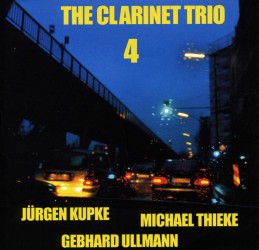 Similar in some way to what a jam session involving Goodman, Shaw and Herman would have entailed is The Clarinet Trio 4 (Leo Records CD LR 622 www.leorecords.com). Besides the obvious difference that the trio members are German, rather than American, additional factors characterize this trio of reed players as a 21st Century juggernaut not a 1930s revival band. For a start, each man plays a different member of the clarinet family: Jürgen Kupke, regular clarinet; Michael Thieke, clarinet plus alto clarinet; and Gebhard Ullmann, bass clarinet. Plus nearly all the tunes are Ullmann originals rather than standards. Unlike earlier reed players who depended on rhythm section accompaniment however, the 11 tracks on this CD feature nothing but clarinet timbres. Interludes which result from an arrangement like this are put into boldest relief on Collectives #13 #14 and Geringe Abweichungen von der Norm. The latter is carefully unrolled at adagio tempo, with balanced reed vibrations and understated motion as staccato slurs and pitch-sliding smears appear at the same time, finally melding into a tremolo narrative. In contrast, Collectives #13 #14 is rife with pinched notes from the straight clarinet, snarling quivers from the alto clarinet and inner-directed bass clarinet growls. Eventually a mellow interface from the higher pitched reeds surmounts these chirps and quacks as Ullmann continues to tongue slap and masticate tones. Other tunes such as Blaues Viertel and Waters explore variations in legato tone blending and burbling reverberations, as triple vibrations are showcased in broken octave, chromatic lines. The climatic triple reed definition is News No News however. As abrasive, tremolo lines from each reedist progressively align against one another the finale finds all ultimately diminishing to silence. Before that, three singular melodies have been cross-vibrated and intertwined, while staccato lines maintain each player’s individuality.
Similar in some way to what a jam session involving Goodman, Shaw and Herman would have entailed is The Clarinet Trio 4 (Leo Records CD LR 622 www.leorecords.com). Besides the obvious difference that the trio members are German, rather than American, additional factors characterize this trio of reed players as a 21st Century juggernaut not a 1930s revival band. For a start, each man plays a different member of the clarinet family: Jürgen Kupke, regular clarinet; Michael Thieke, clarinet plus alto clarinet; and Gebhard Ullmann, bass clarinet. Plus nearly all the tunes are Ullmann originals rather than standards. Unlike earlier reed players who depended on rhythm section accompaniment however, the 11 tracks on this CD feature nothing but clarinet timbres. Interludes which result from an arrangement like this are put into boldest relief on Collectives #13 #14 and Geringe Abweichungen von der Norm. The latter is carefully unrolled at adagio tempo, with balanced reed vibrations and understated motion as staccato slurs and pitch-sliding smears appear at the same time, finally melding into a tremolo narrative. In contrast, Collectives #13 #14 is rife with pinched notes from the straight clarinet, snarling quivers from the alto clarinet and inner-directed bass clarinet growls. Eventually a mellow interface from the higher pitched reeds surmounts these chirps and quacks as Ullmann continues to tongue slap and masticate tones. Other tunes such as Blaues Viertel and Waters explore variations in legato tone blending and burbling reverberations, as triple vibrations are showcased in broken octave, chromatic lines. The climatic triple reed definition is News No News however. As abrasive, tremolo lines from each reedist progressively align against one another the finale finds all ultimately diminishing to silence. Before that, three singular melodies have been cross-vibrated and intertwined, while staccato lines maintain each player’s individuality.
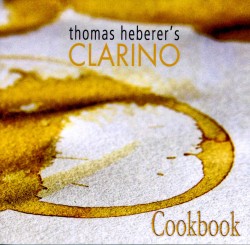 Another trio, but this one including string and brass instruments as well as reeds, is on Clarino Cookbook (Red Toucan RT 9345 www3.sympatico.ca/cactus.red). This time the CD matches the clarinet of Belgian Joachim Badenhorst with the trumpet of German Thomas Heberer, who also composed the dozen selections, plus German-French bassist Pascal Niggenkemper. Although the lineup is the same as if it were a combo of Goodman, trumpeter Harry James and bassist Artie Bernstein, Heberer’s graphic notation wouldn’t have been recognizable by those earlier jazzers, though they would have been impressed by the breadth of this trio’s technique. Encompassing a modicum of unanticipated tranquil passages, especially from muted trumpet and fluid clarinet lines, the fundamental object lies in revealing as many contrasting tones as they intersect. For instance a track such as Nomos, introduced by ringing double bass tones, develops new motifs as a busy trumpet limns the bouncing theme. Moderated with clarinet squeaks, the piece is cleanly concluded with bowed strings. More adventurous, Bogen is concerned with melding air bubbled through both horns’ body tubes with arco swipes from Niggenkemper, whose well-shaped notes later underscore Heberer’s brassy yelps and Badenhorst’s rhythmic tongue slaps. Even more dissonance is present on Erdbär with the bull fiddle barely audible.
Another trio, but this one including string and brass instruments as well as reeds, is on Clarino Cookbook (Red Toucan RT 9345 www3.sympatico.ca/cactus.red). This time the CD matches the clarinet of Belgian Joachim Badenhorst with the trumpet of German Thomas Heberer, who also composed the dozen selections, plus German-French bassist Pascal Niggenkemper. Although the lineup is the same as if it were a combo of Goodman, trumpeter Harry James and bassist Artie Bernstein, Heberer’s graphic notation wouldn’t have been recognizable by those earlier jazzers, though they would have been impressed by the breadth of this trio’s technique. Encompassing a modicum of unanticipated tranquil passages, especially from muted trumpet and fluid clarinet lines, the fundamental object lies in revealing as many contrasting tones as they intersect. For instance a track such as Nomos, introduced by ringing double bass tones, develops new motifs as a busy trumpet limns the bouncing theme. Moderated with clarinet squeaks, the piece is cleanly concluded with bowed strings. More adventurous, Bogen is concerned with melding air bubbled through both horns’ body tubes with arco swipes from Niggenkemper, whose well-shaped notes later underscore Heberer’s brassy yelps and Badenhorst’s rhythmic tongue slaps. Even more dissonance is present on Erdbär with the bull fiddle barely audible.
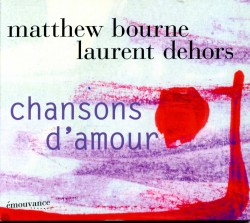 If Clarino Cookbook characterizes modern abstraction, then the 17 miniatures on Chansons d’amour (Émouvance émv 1034 www.emouvance.com) by French clarinettist/bass clarinettist Laurent Dehors and British pianist Matthew Bourne are the post-modern equivalent of jazz chamber music. Still the skills of both men include an undercurrent of dissonance. Take the familiar La Vie en Rose for instance. Dehors’ clarinet line consists of flutter-tonguing and split tone pauses before uncovering the melody defined in a series of glissandi roughened by tongue stops and breaths. This is followed by Triste, an impressionistic line dependent on harmonic balance between the pianist’s upwards moving glissandi and the reedist’s lyrical quivering. Overall, the CD includes some instances of hushed chamber music-style pacing while other themes are more barbed. The equilibrium of BDK theme is maintained as it unrolls at a clean clip, but by the final variant a Brubeck-like waltz rhythm played by Bourne is jockeying for space alongside Dehors’ strident reed shrills and snorts. Echoes of pedal point pacing from Dehors’ contrabass clarinet on Two are subtly undermined by piano clinks, while even the impressionism driven by the pianist’s key clusters and glittery plucks becomes hesitant and out of tempo on Á propos. Simple piano clusters characterize Three, yet Dehors completes the theme playing different variants simultaneously on two clarinets, one with wolf call ferocity, the other double tonguing. In fact, the CD’s defining moments may occur on Thrown. A mini suite in itself, which modulates from multi-level pumping impressionism to smooth lines at the end, the landscape includes chalumeau streaming tones from Dehors as well as reed bites, as Bourne’s patterns encompass key clicks and repetitive chording.
If Clarino Cookbook characterizes modern abstraction, then the 17 miniatures on Chansons d’amour (Émouvance émv 1034 www.emouvance.com) by French clarinettist/bass clarinettist Laurent Dehors and British pianist Matthew Bourne are the post-modern equivalent of jazz chamber music. Still the skills of both men include an undercurrent of dissonance. Take the familiar La Vie en Rose for instance. Dehors’ clarinet line consists of flutter-tonguing and split tone pauses before uncovering the melody defined in a series of glissandi roughened by tongue stops and breaths. This is followed by Triste, an impressionistic line dependent on harmonic balance between the pianist’s upwards moving glissandi and the reedist’s lyrical quivering. Overall, the CD includes some instances of hushed chamber music-style pacing while other themes are more barbed. The equilibrium of BDK theme is maintained as it unrolls at a clean clip, but by the final variant a Brubeck-like waltz rhythm played by Bourne is jockeying for space alongside Dehors’ strident reed shrills and snorts. Echoes of pedal point pacing from Dehors’ contrabass clarinet on Two are subtly undermined by piano clinks, while even the impressionism driven by the pianist’s key clusters and glittery plucks becomes hesitant and out of tempo on Á propos. Simple piano clusters characterize Three, yet Dehors completes the theme playing different variants simultaneously on two clarinets, one with wolf call ferocity, the other double tonguing. In fact, the CD’s defining moments may occur on Thrown. A mini suite in itself, which modulates from multi-level pumping impressionism to smooth lines at the end, the landscape includes chalumeau streaming tones from Dehors as well as reed bites, as Bourne’s patterns encompass key clicks and repetitive chording.
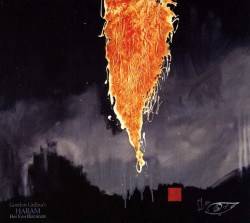 Sonic landscapes of another structure are audible on Vancouver-based plectrumist Gordon Grdina’s Her Eyes Illuminate (Songlines SGL-2407-1 www.songlines.com). Built on a jazz-like interpretation of lilting Arabic airs, Grdina, usually a guitarist, concentrates on oud playing, leading a ten-piece group which melds the traditional timbres of riq, ney and darbuka, with a strong bottom provided by electric bass and drums plus jazz-like solo interjections. Triplet runs from trumpeter JP Carter, contrapuntal duets between the split tones of tenor saxophonist Chris Kelley and the choked vibrations from Jesse Zubot’s violin, and liquid glissandi from François Houle’s clarinet are highpoints. One of Canada’s foremost woodwind players, Houle inventively creates a place for his Europeanized reed within this Middle Eastern showcase as he does in improvised, electronic and notated music contexts. Besides connective obbligatos and descriptive squeaks on other tracks, his most distinctive contribution is on the Egyptian/Druze composition Laktob Aourak al Chagar. Buoyed by the timed drumming tempo and aggressive string strumming, Houle bends his pitches so that his horn’s moderato line takes on a strident sturdiness, then as the percussion-pushed theme descends, he joins with the tenor saxophonist for a frenetic duet and finale.
Sonic landscapes of another structure are audible on Vancouver-based plectrumist Gordon Grdina’s Her Eyes Illuminate (Songlines SGL-2407-1 www.songlines.com). Built on a jazz-like interpretation of lilting Arabic airs, Grdina, usually a guitarist, concentrates on oud playing, leading a ten-piece group which melds the traditional timbres of riq, ney and darbuka, with a strong bottom provided by electric bass and drums plus jazz-like solo interjections. Triplet runs from trumpeter JP Carter, contrapuntal duets between the split tones of tenor saxophonist Chris Kelley and the choked vibrations from Jesse Zubot’s violin, and liquid glissandi from François Houle’s clarinet are highpoints. One of Canada’s foremost woodwind players, Houle inventively creates a place for his Europeanized reed within this Middle Eastern showcase as he does in improvised, electronic and notated music contexts. Besides connective obbligatos and descriptive squeaks on other tracks, his most distinctive contribution is on the Egyptian/Druze composition Laktob Aourak al Chagar. Buoyed by the timed drumming tempo and aggressive string strumming, Houle bends his pitches so that his horn’s moderato line takes on a strident sturdiness, then as the percussion-pushed theme descends, he joins with the tenor saxophonist for a frenetic duet and finale.
Skilfully manipulating the single reed instrument’s sonic qualities, Houle, Badenhorst, Dehors and The Clarinet Trio validate the clarinet’s adaptability as a vehicle for contemporary improvisation.
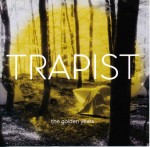 The Golden Years
The Golden Years

